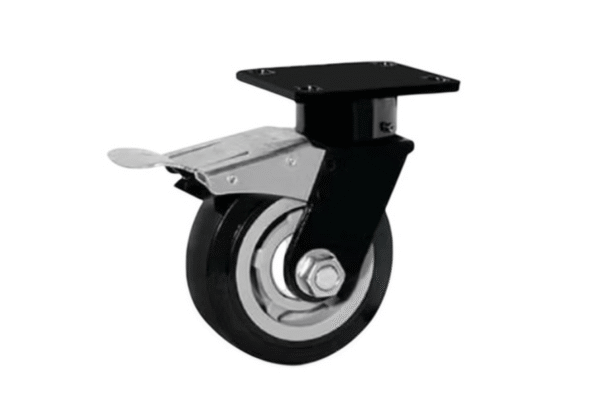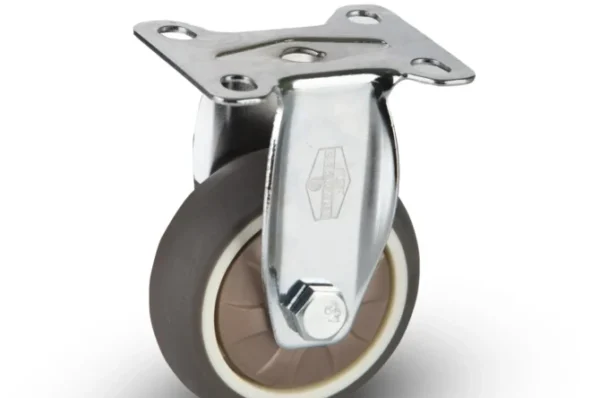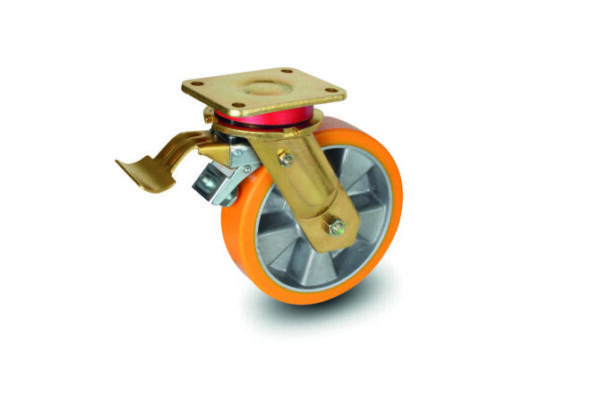When it comes to industrial mobility, heavy-duty casters are the backbone of efficiency, safety, and performance. But even the best caster wheels can underperform or fail if they’re not installed correctly. At Go Casters, we’ve seen how simple installation missteps can snowball into costly downtime or even workplace accidents.
We’re here to share the most common mistakes people make when installing casters—so you can avoid them and get the most out of your equipment.
1. Choosing the Wrong Caster for the Application
Before we discuss installation, let’s address the most significant pre-installation error: selecting an incorrect caster in the first place. It’s easy to underestimate the role casters play in load handling and movement. You need to consider load capacity, floor type, frequency of movement, and environmental conditions. For instance, heavy duty swivel casters are ideal for machinery that requires maneuverability, but if you’re placing them on an uneven floor or heavy incline, you’ll need specific designs that match that need.
Too often, businesses order based on price alone—only to find that their casters can’t handle the pressure (literally). Do your homework or speak to a supplier who knows industrial mobility inside and out.
2. Ignoring Load Distribution
Casters are assessed based on individual wheel capacity; however, load distribution is not always equal. Imagine your equipment weighs 1,000 kg and you’ve installed four casters. It’s common to think each caster should support 250 kg—this isn’t quite true. Consider scenarios where one wheel encounters a bump or the floor has slight irregularities: it’s essential to incorporate an error margin for such situations.
At Go Casters, we always recommend calculating load requirements with safety factors in mind—especially for swivel casters in UAE, where surfaces and temperatures can vary significantly.
3. Incorrect Mounting Bolt Pattern
This might seem minor, but improper bolt patterns are one of the most overlooked issues. Caster mounting plates come with specific hole configurations. If you try to “make it work” or drill your adjustments, you can weaken the mounting surface or misalign the wheels. That throws off balance, creates drag, and shortens the caster’s lifespan.
Always double-check the bolt pattern on both the caster and the equipment surface. If they don’t match, you need a compatible caster—not a DIY fix.
4. Forgetting to Lock the Swivel When Installing
For heavy duty swivel casters, this is critical. If the swivel section is freely rotating during installation, the alignment can be off. This might not seem like a problem—until your cart or machine starts pulling to one side or becomes unstable when loaded.
The right approach? Lock the swivel mechanism in a fixed position during installation. This ensures proper orientation and long-term stability.
5. Using the Wrong Fasteners
It’s not just about mounting the caster—it’s about how you do it. Using screws that are too short, bolts without washers, or fasteners that aren’t graded for heavy-duty loads can lead to catastrophic failure. Vibration alone can gradually loosen fasteners that were not appropriately selected.
We recommend using high-tensile bolts with lock washers or thread-locking compound. It’s a small detail that makes a big difference in safety and durability.
6. Not Accounting for Floor Conditions
A common assumption: “If it rolls, it’ll work anywhere.” Not true.
Casters are affected by every crack, slope, oil spill, or piece of debris they encounter. If you install heavy-duty casters on a piece of equipment that’s used in a warehouse with expansion joints or ramps, you need to choose casters that absorb shock or resist impact. Polyurethane or rubber wheels might be ideal. If you’re in a clean room or high-heat setting, you may need stainless steel or high-temp wheels.
It’s all about matching the caster to the floor—and failing to do so is one of the biggest causes of early wear.
7. Misplacing Fixed and Swivel Casters
Consider having two robust swivel casters and another two fixed rigid casters. It’s important to consider where they are positioned for optimal performance. If you mount them in the wrong configuration (e.g., swivels on the ends and fixed casters in the middle), your equipment won’t move correctly. You’ll experience awkward turning, poor tracking, and extra strain on your casters.
The right setup usually places fixed casters on one end and swivels on the other. For more maneuverability, some use the “diamond pattern” with one fixed caster in the center and swivel casters at the corners. The key is to plan your layout before installation.
8. Over-Tightening or Under-Tightening Mounting Bolts
Torque matters. Too loose, and your casters will rattle, shift, or even come off. Too tight, and you can strip threads, crack mounting plates, or deform the base of the caster.
Utilize a torque wrench and adhere to the caster manufacturer’s recommended settings. It’s important to ensure accuracy here—this step is not one you should skip or rush.
9. Skipping Regular Maintenance After Installation
After the casters are installed, the task isn’t complete. Failing to check for wear, rust, debris, or loose bolts over time is a silent killer. Especially in regions like the UAE, where heat, dust, and sand can affect wheel bearings, neglecting maintenance will eventually cause your casters to fail—often when you least expect it.
Make routine inspections a part of your operations. Examine the wheels for any cracks, flat areas, or wobbles. Tighten any loose nuts and make sure all moving parts are properly greased. By performing preventive maintenance, you can achieve better long-term performance.
Final Thoughts
At Go Casters, we understand the real-world challenges businesses face when it comes to industrial mobility. Installing casters may seem straightforward—but overlooking the small details can lead to big problems. Whether you’re outfitting factory carts, warehouse racks, or heavy machinery, avoiding these mistakes can help you maximize safety, efficiency, and equipment life.
And when you’re sourcing swivel casters in UAE or need reliable heavy-duty casters built to last, we’re here to help. Let’s move smarter, not harder.




